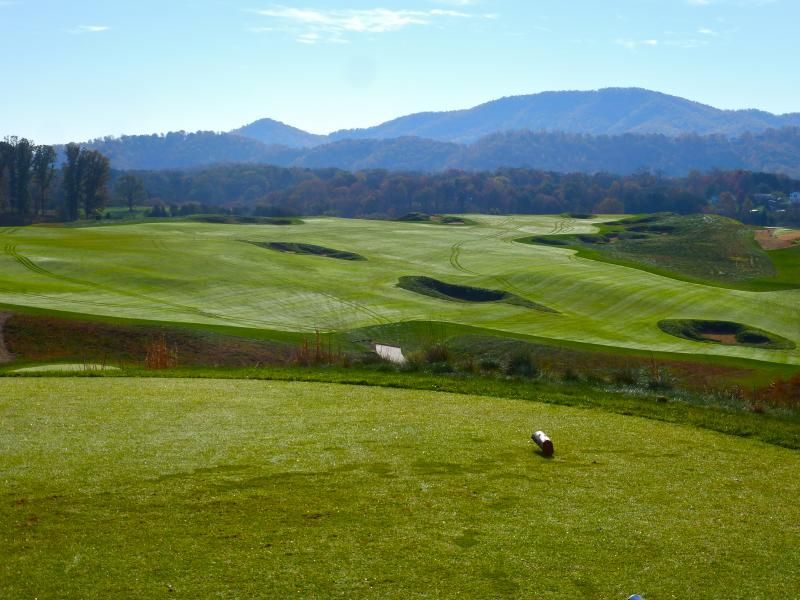Patrick,
After spending two weeks in a detailed discussion of Pete Dye Golf Club, the use of deception (whether by misleading bunkers, Line of Instinct temptation) is forefront in my mind. The whole topic of subtle hazards (use of uneven lies, psychological uncertainty, etc) has always been fascinating to me.
Uneven lies, in particular, resonate with me given some of the severe terrain courses I played during my formative years (the course I showed above is a part-time ski resort). In the case of par 5s, I've always liked those holes with a very wide fairway, where 10-15 yards is flat ("go-zone"), but the remainder leave you with an uneven stance. I hadn't really thought of the use of other features pushing you away from those ideal lies. Rather, I thought the overall wide wide fairway lulled you to sleep so you wouldn't focus on the specific portion needed.
However, in reading your initial post, it seemed like you have two different issues going on with the uneven / rumpled drive zone:
On one hand, there is the impact the uneven lie may have on your subsequent shot (e.g. Doak's Par 5 lie), which we've talked about (and Chris' example as well).
But I also read your post thinking of the impact of tilt on the roll-out of your tee shots. However, if a tilt is severe enough to affect your drive, it may be harder to conceal or distract your attention away from.
I've been trying to think of good examples of the latter - where I see a player hit a drive down the middle and immediately think "ooh, that's trouble" but they're not aware.
In a way, Ballyhack's 11th is one (322 yards) In this case, people see the overall incline of the landing area climbing towards the green, but they may not appreciate how much the slope is from right to left. The golfer is further pushed left by the image of the bunker right (even though the slope near it acts as a bit of a backstop for pushed drives). A draw landing in the middle may often reach the right rough or even fall down the left slope if hot enough:

On Ballyhack's second, the left to right slope isn't hidden, but the image of the centerline hazards often invokes the thought of "which one can I carry." In this case, players may try to carry the second bunker to take a shortcut, and not realize that they'll be hitting a wall when it lands (no rollout). The hazard causes them to misread the landing zone. To get closer to the green, the better play is to aim directly at the 3rd bunker and let the slope kick it right (with some forward bounce). You'll generally be closer taking the indirect route than the direct route.
A third alternative that most miss (because of the Line of Instinct and the belief that you need to challenge centerline hazards) is that the landing area to the left is very flat. If you ignore the bunkers altogether, you can get just as close to the green due to the additional rollout while aiming well left Of course, on that left/high line, there is often a slight downhill lie when facing the green, which ties into the uncertainty that Tom referred to (and is the main reason I don't play that line). In comparison, 2nd shot lies from the rightward lines are usually uphill.
Overall, the combination of hazards and slope make this a magnificent hole which requires you read the rollout of your tee shot and the lie for your second.
